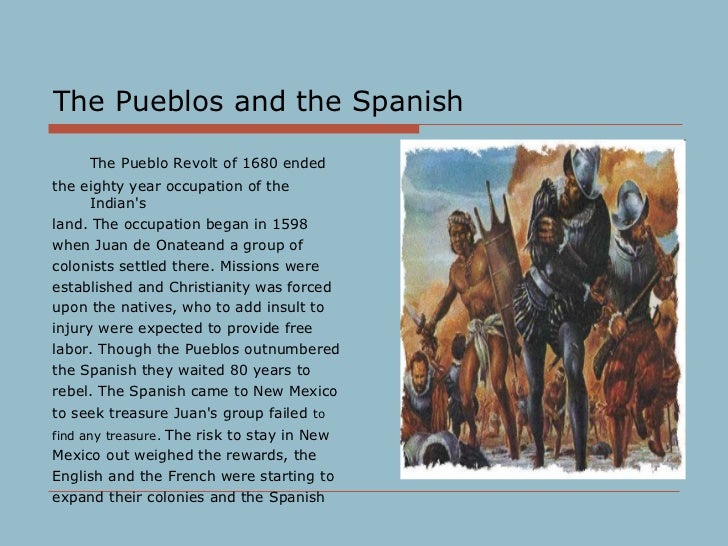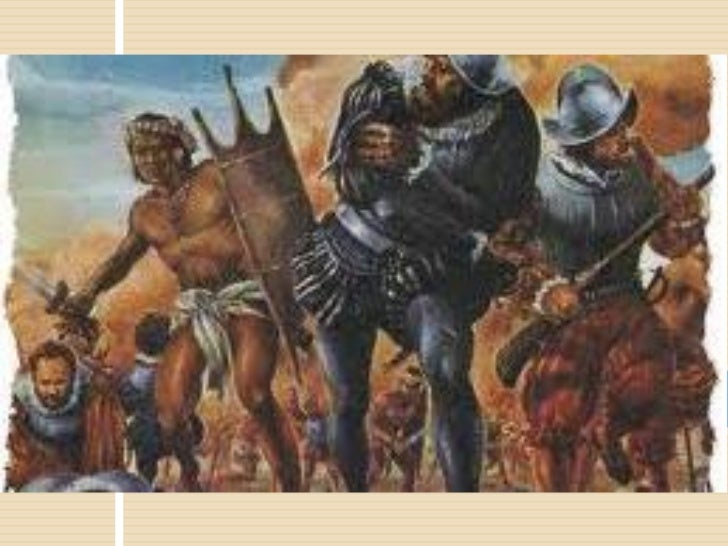
Echoes of Resistance: The Pueblo Revolt of 1680 and its Enduring Legacy
SANTA FE, NEW MEXICO – In the arid, sun-baked lands of what is now New Mexico, a quiet but potent storm brewed for decades. It was a storm of religious persecution, economic exploitation, and cultural suppression that would, on a scorching August day in 1680, erupt into one of the most successful indigenous uprisings in North American history: the Pueblo Revolt. For twelve years, the native peoples of the Rio Grande valley managed to expel their Spanish colonizers, reclaim their ancestral lands, and reassert their spiritual and cultural identity. The story of the Pueblo Revolt is not merely a tale of rebellion; it is a profound testament to resilience, unity, and the enduring power of a people fighting for their very soul.
The Crucible of Colonialism: Seeds of Rebellion
To understand the ferocity and coordination of the 1680 revolt, one must first grasp the unbearable conditions under which the Pueblo peoples lived for nearly a century. Spanish conquistadors, led by Don Juan de Oñate, had first arrived in 1598, claiming the vast territory of New Mexico for the Spanish crown. Their arrival ushered in an era of brutal subjugation that systematically dismantled Pueblo society.
Religious Persecution: Perhaps the most egregious and deeply felt grievance was the systematic assault on Pueblo spiritual beliefs. Franciscan missionaries, zealous in their mission to convert the "heathen," sought to eradicate indigenous religions entirely. Kivas, sacred underground ceremonial chambers, were destroyed. Kachina dolls, central to Pueblo spiritual life, were confiscated and burned. Public rituals were forbidden, and spiritual leaders, or caciques, were frequently arrested, flogged, and even executed for practicing their traditional ways.
"The friars were not content with merely converting," notes historian David Weber, "they sought to obliterate. They saw no virtue in native beliefs, only the work of the devil." This aggressive evangelism was not just an attack on faith; it was an attack on the very fabric of Pueblo identity, where religion, daily life, and the natural world were inextricably linked. A particularly cruel act in 1675 saw the arrest of 47 Pueblo spiritual leaders, accused of witchcraft. Four were hanged, and the others publicly flogged. Among the survivors was a man named Popé from Ohkay Owingeh (San Juan Pueblo), who would become the architect of the revolt.

Economic Exploitation: Alongside spiritual oppression, the Pueblo people endured severe economic hardship. The Spanish imposed the encomienda system, a labor system that forced Pueblos to pay tribute in goods like maize, textiles, and labor to Spanish encomenderos and missionaries. They were forced to work in Spanish fields, build churches, and herd livestock, often neglecting their own subsistence farming. These demands were particularly devastating during periods of drought, which plagued New Mexico throughout the mid-17th century, leading to widespread famine and disease.
Political Subjugation and Violence: The Spanish dismantled traditional Pueblo governance, replacing it with their own system of governors and alcaldes mayores. Any resistance was met with swift and brutal force. The infamous Acoma Massacre of 1599, where Oñate’s forces killed hundreds of Pueblo people and amputated the right foot of surviving male warriors over the age of 25, served as a chilling reminder of Spanish power and cruelty. Even as decades passed, the memory of such atrocities lingered, a festering wound in the collective Pueblo consciousness.
External Pressures: Compounding these internal miseries, the Pueblo communities were also increasingly vulnerable to raids from nomadic Apache and Navajo groups. The Spanish, often unable or unwilling to provide adequate protection, sometimes even blamed the Pueblos for these raids, further straining relations and highlighting the ineffectiveness of colonial rule.
The cumulative effect of these pressures created an environment ripe for rebellion. The Pueblos, despite their linguistic and cultural diversity, shared a common oppressor and a common desire for liberation.
The Architect of Uprising: Popé and the Knotted Cord
It was in this atmosphere of desperation and simmering resentment that Popé emerged as a pivotal leader. After his release from the 1675 arrests, Popé retreated to Taos Pueblo, a community less accessible to Spanish authority, where he meticulously planned the revolt. He preached a message of purification, urging his people to cast off all things Spanish – their religion, their language, and their customs – and return to their ancestral ways.
Popé’s genius lay in his ability to unite disparate Pueblo communities, a feat previously thought impossible by the Spanish. He used a simple yet ingenious method of communication: a knotted cord. Each knot represented a day, and as each day passed, a knot was untied. The final knot signaled the day of the uprising. This ensured coordinated action across hundreds of miles and dozens of pueblos, maintaining secrecy until the last possible moment. The planned date was August 11, 1680. However, when the Spanish discovered the plot through two Pueblo messengers, Popé moved the attack up by a day.
The Storm Breaks: August 10, 1680
On August 10, 1680, the storm broke. From Taos in the north to Isleta in the south, Pueblo warriors descended upon Spanish settlements, ranches, and missions. The attacks were swift and merciless. Priests were killed at their altars, churches were burned, and settlers were driven from their homes. In total, over 400 Spanish colonists, including 21 of New Mexico’s 33 Franciscan friars, were killed.

The remaining Spanish settlers, numbering around 2,000, including Governor Antonio de Otermín, barricaded themselves in the Palace of the Governors in Santa Fe. The Pueblos laid siege to the city, cutting off its water supply. After several days of desperate fighting and dwindling resources, Otermín ordered a retreat. On August 21, the bedraggled Spanish survivors began their long, arduous march south to El Paso del Norte (modern-day Ciudad Juárez, Mexico), abandoning their colonial outpost entirely.
"The Indians came in such numbers," Governor Otermín reported, "that it was not possible to count them… shouted and said that now the God of the Spaniards was dead, and that the one they adored was the only one that was alive." This chilling account underscored the profound spiritual dimension of the revolt, a reclamation of their gods and their identity.
A Brief Autonomy: The Pueblo Interregnum
For the next twelve years, New Mexico was free of Spanish rule. The Pueblos immediately set about purifying their land and culture. Churches were systematically destroyed, Spanish livestock was slaughtered, and fields were cleansed of Spanish crops. Popé decreed that those who had been baptized must wash themselves with yucca suds to cleanse the taint of Spanish religion. He attempted to unify the Pueblos under a new, indigenous government, seeking to restore traditional practices and religious ceremonies.
However, this period of autonomy was not without its challenges. Popé, once a unifying figure, became increasingly autocratic, demanding tribute and suppressing dissent among his own people. His attempts to centralize power clashed with the decentralized nature of traditional Pueblo governance. Inter-Pueblo rivalries, which had been set aside for the common cause against the Spanish, resurfaced. Furthermore, the constant threat of Apache and Navajo raids continued, and without Spanish protection (however flawed), the Pueblos remained vulnerable. These internal divisions and external pressures would ultimately weaken their resolve.
The Reconquista and a New Reality
The Spanish, humiliated by their expulsion, never truly relinquished their claim to New Mexico. In 1692, led by Don Diego de Vargas, a well-organized force began the process of "reconquista." De Vargas, learning from the mistakes of his predecessors, adopted a more conciliatory approach. He offered pardons and promised a less oppressive rule, understanding that a brutal reconquest would only lead to further revolts.
By 1696, the Spanish had largely reestablished control, though not without further sporadic resistance. However, the New Mexico they returned to was fundamentally different. The Pueblo Revolt had irrevocably altered the colonial landscape.
Enduring Legacy: A Shift in Power Dynamics
The long-term effects of the Pueblo Revolt were profound, shaping the cultural and political landscape of the American Southwest for centuries to come.
For the Pueblos: The revolt, despite the eventual reconquest, was a monumental victory. It demonstrated the power of unity and resistance, ensuring the survival of their cultural and religious identity. The Spanish, having learned a bitter lesson, were forced to adopt a more pragmatic and less oppressive approach. Land grants were formalized, protecting Pueblo territories. Forced labor was significantly reduced, and the aggressive suppression of native religion was eased, leading to a degree of syncretism where some traditional practices continued alongside Catholicism. The Pueblos had asserted their right to exist as a distinct people, not merely as subjects of the Spanish crown. Their cultural resilience, forged in the crucible of the revolt, remains a defining characteristic today.
For the Spanish: The revolt fundamentally reshaped Spanish colonial policy in New Mexico. The reconquered province was managed with a lighter hand, recognizing the need for cooperation rather than pure domination. The focus shifted from purely extractive economic policies to a more defensive stance, as the Spanish needed the Pueblos as allies against the increasingly powerful nomadic tribes and the encroaching French and English. The experience of the revolt also made the Spanish more wary of future uprisings, contributing to a more cautious approach to colonization in other parts of their empire.
The Pueblo Revolt stands as a powerful anomaly in the history of European colonization of the Americas. Unlike many other indigenous rebellions, it achieved its primary goal: the expulsion of the colonizers. While the Spanish eventually returned, the subsequent colonial relationship was forever altered. The Pueblos had shown that even against overwhelming technological and military might, a united people, fighting for their spiritual and cultural survival, could achieve liberation.
Today, the Pueblo nations of New Mexico continue to thrive, their vibrant cultures and traditions a living testament to the courage and determination of their ancestors. The echoes of the 1680 revolt resonate through their enduring sovereignty, a constant reminder that freedom, once fought for, can never be truly extinguished. The story of the Pueblo Revolt is not just history; it is a vital part of America’s ongoing narrative of resistance, resilience, and the relentless pursuit of self-determination.


